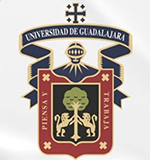Introduction to the Meritorious Autonomous University of Puebla:
Introduction: The Autonomous University of Puebla is an important public institution of higher learning in the state of Puebla, Mexico. It enjoys a high reputation in the academic and educational circles in Mexico and has trained a large number of outstanding professionals for Mexico.
Overview: The total number of students in 2022 reached 117,512, including 51,089 undergraduates and 3336 graduate students. The school has multiple campuses located throughout the state of Puebla, with the main campus located in the city of Puebla. It offers a wide range of disciplines covering humanities, social sciences, natural sciences, engineering technology, medicine and other fields.
History: The school's history dates back to 1578, when the Colegio del Espíritu Santo was established, and it was sponsored by the Jesuits for most of the Spanish colonial period. It was converted into a public college in 1825, became a public university in 1937, gained autonomy in 1956, and was renamed the Autonomous University of Puebla in 1987.
Date of establishment: The Espiritu Santo College was established on April 15, 1578, officially became a university in 1937, and gained autonomy in 1956.
Strength of school operation: It has a strong faculty team, fruitful academic research results, and has published a large number of high-quality academic papers in the fields of engineering technology, environmental science, and cultural studies. The school is one of the few institutions in Mexico that participated in the ALICE experiment of the European Organization for Nuclear Research (CERN). Its engineering school, medical school, and humanities and social sciences majors are well-known in Mexico and have trained many outstanding graduates. In addition, the school has established cooperative relations with many universities and research institutions around the world and actively participated in international academic exchange activities.
Nature of the institution: public university
Educational philosophy: Its motto "pensar bien, para vivir mejor" means "think well, live better", emphasizing the improvement of life quality through good thinking and learning, cultivating students' critical thinking and independent thinking ability, focusing on the combination of academic research and practice, and committed to providing students with a comprehensive education so that they can adapt to the needs of social development and contribute to society.
Key laboratories and disciplines: The school has an excellent teaching system in disciplines such as chemistry, materials science and physics. The key laboratories have not yet been identified, but significant research results have been achieved in the fields of engineering technology, environmental science, and cultural studies.
Faculty: The school has four main areas in Puebla, including the University City, with the School of Physical Sciences; the Health District, with the School of Nursing and the School of Medicine, etc. In addition, there are nine regional divisions and three nearly autonomous "foreign academic units".
Ranking: Ranked in the 1201-1400 range in the 2025 QS World University Rankings. In the 2019 Times Higher Education World University Rankings, it ranks in the top 60 in Latin America and in the top 300 in the world for gender equality.
Cost: Undergraduate program tuition is about 100-150 US dollars per credit, and the total tuition for one academic year is about 2,000-3,000 US dollars; master's program science and engineering is about 120-180 US dollars per credit, humanities and social sciences is about 100-150 US dollars per credit, and the total tuition for one-year master's is about 3,000-5,000 US dollars; doctoral program is about 150-200 US dollars per credit, and the tuition for one year is about 4,000-6,000 US dollars. In addition to tuition, students also need to consider registration fees of about 100-200 US dollars, textbook fees of about 300-500 US dollars per year, and living expenses of about 500-800 US dollars per month.
Campus environment: Campuses are located in urban and rural areas. The main campus in Puebla has many historical buildings and colonial churches that reflect the school's history. The campus has four museums, a cultural center, a historical library, a botanical garden and a chess park, and is also equipped with advanced student facilities such as sports, entertainment, health and leisure facilities.
-

National Autonomous University of Mexico
-

Anahuac University of North Mexico
-

Universidad Autonoma de Guadalajara
-

Universidad ETAC
-

Meritorious Autonomous University of Puebla
-

Technological University of Tulancingo
-

Metropolitan Autonomous University
-

Autonomous University of Sinaloa
-

University of Guadalajara
-

Technological University of Huejotzingo
-

Mesoamerican University
-

Istmo University
-

Mariano Galvez University of Guatemala
-

Regional University of Guatemala
-

Galileo University
-

Francisco Marroquín University
-

Rafael Landívar University
-

University of the Valley of Guatemala
-

University of San Carlos of Guatemala
-

Technological Institute of Tlaxcala Plateau
-

Golfo University
-

Technological University of South Sonora
-

Technological University of Huejotzingo
-

Tizimín Institute of Technology
-

Chilpancingo Institute of Technology
